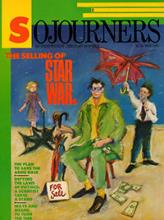Poised at the brink of a new century, Americans are forging bravely into the past. Nostalgia is the order of the day. All the TV classics of the '50s and '60s are back in style. Re-runs are more popular than ever, and many old favorites, including "Leave It to Beaver," "Perry Mason," "Twilight Zone," "Gilligan's Island,"and "The Monkees," have been resurrected in new productions.
One of the more interesting new TV shows of the season, "Crime Story," is set in the Kennedy era. In the last year, two pop recordings more than 20 years old (Ben E. King's "Stand By Me" and The Beatles' "Twist and Shout") made the ever-mercurial Top 10. And old rock and rhythm-and-blues tunes are now the favored hook in TV advertisements for disposable diapers, automobiles, and just about everything except laxatives.
On radio the happy-days syndrome rules. Nostalgia formats aimed at generational bites of the "great American demographic" have proliferated wildly in the last few years. In chronological order, they include the big-band, swing, Sinatra, etc. format; the '50s-oldies stations modeled on the film American Graffiti; the "Motown and More" black pop format; "light rock" stations offering a heavy dose of the "Sweet Baby James " early '70s singer-songwriter sound; and the ultimate time-capsule format recreating with painstaking specificity the FM album rock sound circa '69 to '74.
Two explanations are commonly offered for the nostalgia trend. One has cultural nostalgia walking hand-in-hand with the nostalgic political appeal of Ronald Reagan. The other theory considers nostalgia the natural by-product of baby-boomers having their families and putting down their erstwhile roots. Both are probably true.
Read the Full Article

